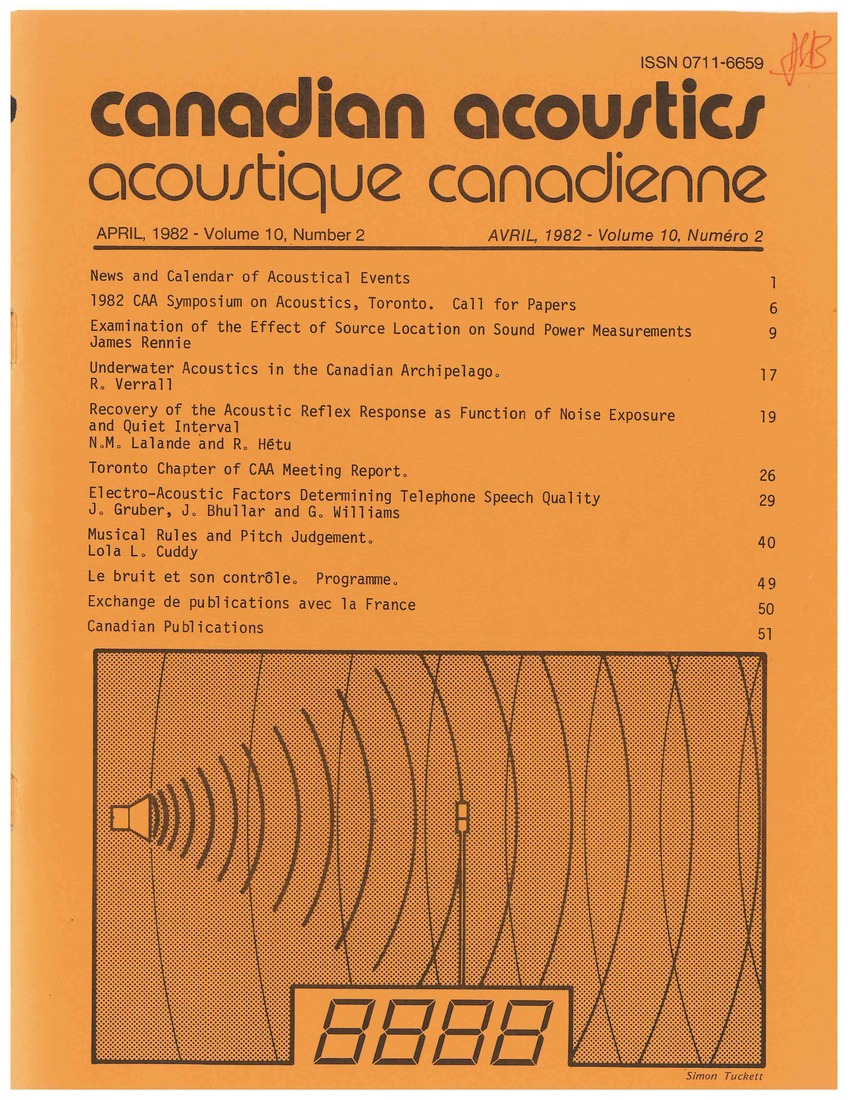Recovery of the Acoustic Reflex Response as Function of Noise Exposure and Quiet Interval
Abstract
In order to know if the acoustic reflex does protect the inner ear from temporary threshold shift caused by the exposure to a loud industrial noise, one need to know the reflex response decay during the noise exposure, as well as the amount of recovery allowed by quiet intervals. The influence of the duration of a broadband noise, on the recovery function of the acoustic reflex has been investigated. Four noise durations and four (or occasionally five) quiet intervals were selected. Results showed that the reflex recovery is an exponential function of the quiet interval that exists between two noise exposures; after a few seconds of rest, recovery proceeds fairly rapidly, even if the continuous noise exposure lasts 12 minutes. Results also indicated that for the 6 and 12 minute exposure durations, the reflex recovery is independent of the noise duration. For the shorter durations, that is those associated with a reflex decay of 20 and 40%, the results tend to indicate that the recovery is probably independent of the percentage of decay prevailing at the end of the noise exposure.Additional Files
Published
How to Cite
Issue
Section
License
Author Licensing Addendum
This Licensing Addendum ("Addendum") is entered into between the undersigned Author(s) and Canadian Acoustics journal published by the Canadian Acoustical Association (hereinafter referred to as the "Publisher"). The Author(s) and the Publisher agree as follows:
-
Retained Rights: The Author(s) retain(s) the following rights:
- The right to reproduce, distribute, and publicly display the Work on the Author's personal website or the website of the Author's institution.
- The right to use the Work in the Author's teaching activities and presentations.
- The right to include the Work in a compilation for the Author's personal use, not for sale.
-
Grant of License: The Author(s) grant(s) to the Publisher a worldwide exclusive license to publish, reproduce, distribute, and display the Work in Canadian Acoustics and any other formats and media deemed appropriate by the Publisher.
-
Attribution: The Publisher agrees to include proper attribution to the Author(s) in all publications and reproductions of the Work.
-
No Conflict: This Addendum is intended to be in harmony with, and not in conflict with, the terms and conditions of the original agreement entered into between the Author(s) and the Publisher.
-
Copyright Clause: Copyright on articles is held by the Author(s). The corresponding Author has the right to grant on behalf of all Authors and does grant on behalf of all Authors, a worldwide exclusive license to the Publisher and its licensees in perpetuity, in all forms, formats, and media (whether known now or created in the future), including but not limited to the rights to publish, reproduce, distribute, display, store, translate, create adaptations, reprints, include within collections, and create summaries, extracts, and/or abstracts of the Contribution.


